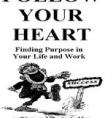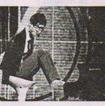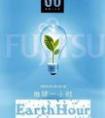阅读下面短文,请根据所给中文正确拼写单词,使短文意思完整。每空限填一词。First, they were two… now they are already six. Those noisy children are eager to trave-八年级英语
题文
| 阅读下面短文,请根据所给中文正确拼写单词,使短文意思完整。每空限填一词。 First, they were two… now they are already six. Those noisy children are eager to travel around the world with their 小题1: (父母). Yes, that’s possible with the Zapps who have started from Argentina to travel around the world since 小题2: (一月) 23rd, 2000. The big question being asked 小题3: (被) the curious public is: “What prompted (促使) 小题4: (他们) to travel around the world?” The couple’s answer is 小题5: (总是) simple: “It’s just one wish — to travel around the 小题6: (整个) world.” Now, their footsteps have covered 小题7: (多) than forty countries. With the help of the 1928 car from 小题8: (英格兰), the couple along with the four kids have 小题9: (面对) the challenges of the travels bravely . So, even if you are not rich, you can be richer with all the memories like 小题10: (到达) to new places and meeting new friends. Truly, each one of us can fulfill our dreams if we start now! |
答案
小题1:parents 小题2:January 小题3:by 小题4:them 小题5:always 小题6:whole 小题7:more 小题8:England 小题9:faced 小题10:getting |
试题分析:本文讲了中国的传统节日---中秋节的由来。 小题1:根据空前面是their,应该用“父母”的复数,故填parents。 小题2: 一月:January;故填January。 小题3:句意:被好奇的观众问的一大问题是……;被:by;故填by。 小题4:根据句意分析prompted (促使)是一个动词,后应跟代词的宾格,故填them。 小题5:根据句意分析用频率副词。总是:always;故填always。 小题6:根据句意分析,空前面有the,应用whole;故填whole。 小题7:more than是“多,超过”的意思,故填more。 小题8:根据前面有from,可知后面应该用名词,故填England。 小题9:face 面对;此句是现在完成时,前面有have,故填faced。 小题10:句意:因此,即使你不富有,你会随着到达新地方和遇见新朋友这样的所有记忆而变得更加富有。get to 到达。句中的like是介词“像”的意思,后应跟动名词,故填getting。 |
据专家权威分析,试题“ 阅读下面短文,请根据所给中文正确拼写单词,使短文意思完整。每..”主要考查你对 物主代词,单词、词组 等考点的理解。关于这些考点的“档案”如下:
物主代词单词、词组
考点名称:物主代词
- 物主代词:
表示所有关系的代词叫做物主代词,也叫人称代词的所有格。
物主代词分为形容词性物主代词和名词性物主代词两种。
物主代词有人称和数的变化。第三人称单数的物主代词还有性别的变化。 物主代词的用法:
物主代词既有表示所属的作用又有指代作用,例如:
John had cut his finger; apparently there was a broken glass on his desk.
约翰割破了手指,显而易见,他桌子上有个破碎的玻璃杯。
物主代词有形容词性(my, your等)和名词性(mine, yours等)两种:
形容词性的物主代词属于限定词。
名词性的物主代词在用法上相当于省略了中心名词的 -'s属格结构,例如:
Jack's cap 意为 The cap is Jack's.
His cap 意为 The cap is his.形容词性物主代词用法:
1. 形容词性物主代词相当于形容词,在句中只能用作定语,后面必须跟名词。名词性物主代词常用来避免和前面已提及的名词重复。
相当于【形容词性物主代词+名词】。例如:
Is that yourbike? 那是你的自行车吗?
My pen is quite different from his.
2. 如果名词前用了形容词性物主代词,就不能再用冠词(a, an, the)、指示代词(this, that, these, those)等修饰词了。例如:
这是他的书桌。This is his desk.
3. 与形容词一起修饰名词时,形容词性物主代词要放在形容词的前面。例如:
his English books他的英语书。
their Chinese friends他们的中国朋友。
4. 汉语中经常会出现"我妈妈","你们老师"等这样的语言现象,虽然代词用的是"我"、"你们",但实际意义仍是"我的"、"你们的",
所以在英译时,注意要用形容词性物主代词"my","your"。
例如:你妈妈在家吗?
误:Is you mother at home?
正:Is yourmother at home?
5. it's与its读音相同,he's与his读音相似,但使用时需注意它们的区别(it's和he's分别是it is和he is的缩略形式,但its 和his 却是形容词性物主代词) 。
例如: It's a bird. Its name is Polly. 它是一只鸟。它的名字叫波利。
He's a student. His mother is a teacher. 他是一名学生。他妈妈是一位教师
口诀:
有“名”则"形“,无“名”则“名”。
意思是:后面是名词的话,前面就要用 形容词性物主代词。后面没有名词的话,就用名词性物主代词。名词性物主代词的句法功能:
a. 作主语,例如:
May I use your pen? Yours works better.
我可以用一用你的钢笔吗? 你的比我的好用。
b.作宾语,例如:
I love my motherland as much as you love yours.
我爱我的祖国就像你爱你的祖国一样深。
c.作介词宾语,例如:
You should interpret what I said in my sense of the word, not in yours.
你应当按我所用的词义去解释我说的话,而不能按你自己的意义去解释。
d.作主语补语,例如:
The life I have is yours. It's yours. It's yours. 我的生命属于你,属于你,属于你。
名词性物主代词可以用在介词of的后面,相当于“of+名词所有格”。
口诀
有“名”则"形“,无“名”则“名”。
注:
后面是名词的话,前面就要用 形容词性物主代词。
后面没有名词的话,就用名词性物主代词.形容词性物主代词与名词性物主代词的区别:
一.形容词性物主代词起形容词的作用,用在名词前。
例:
1. This is my book.这是我的书。
2. We love our motherland.我们热爱我们的祖国。
二.名词性物主代词起名词的作用。
例:
1. Look at the two pencils. The red one is yours and the blue one is mine.
看那两支铅笔,红的是你的,蓝的是我的。
2. He likes my pen. He doesn't like hers.
他喜欢我的钢笔。不喜欢她的。
3. 注意:在使用名词性物主代词时,必须有特定的语言环境,也就是要省略的名词。
例:
It's hers.是她的。
(单独使用大家不知是怎么回事,不可以这样用)
There is a book. It's hers.那有本书。是她的。
(先提及,大家才明白)
4. 名词性物主代词=形容词性物主代词+名词
为避免重复使用名词,有时可用“名词性物主代词”来代替“形容词性物主代词+名词”的形式。
例:
My bag is yellow, her bag is red, his bag is blue and your bag is pink.
为避免重复使用bag,可写成My bag is yellow, hers is red, his is blue and yours is pink.
- 最新内容
- 相关内容
- 网友推荐
- 图文推荐
| [家长教育] 孩子为什么会和父母感情疏离? (2019-07-14) |
| [教师分享] 给远方姐姐的一封信 (2018-11-07) |
| [教师分享] 伸缩门 (2018-11-07) |
| [教师分享] 回家乡 (2018-11-07) |
| [教师分享] 是风味也是人间 (2018-11-07) |
| [教师分享] 一句格言的启示 (2018-11-07) |
| [教师分享] 无规矩不成方圆 (2018-11-07) |
| [教师分享] 第十届全国教育名家论坛有感(二) (2018-11-07) |
| [教师分享] 贪玩的小狗 (2018-11-07) |
| [教师分享] 未命名文章 (2018-11-07) |


![—______ is Jenny.—I’m Gina. Nice to meet you.[ ]A. I’mB. His nameC. I’mD. My name-七年级英语](http://www.00-edu.com/d/file/ks/4/2/wuzhudaici/2019-11-29/small48b153aa794daeb090c5d2505d5cbbac1575042450.png)



